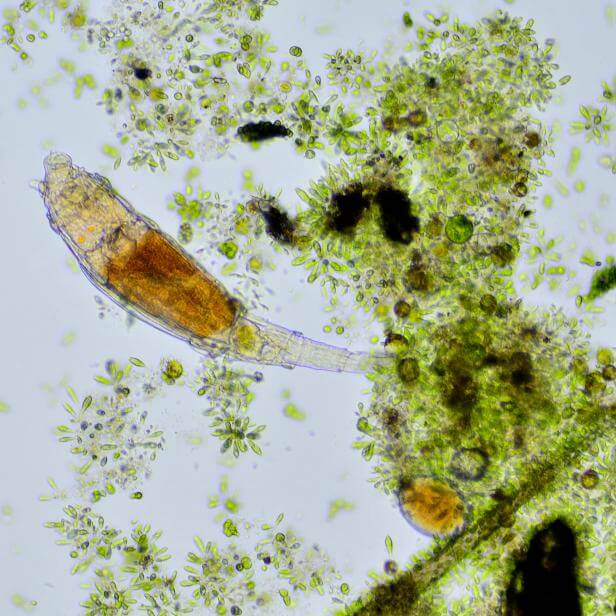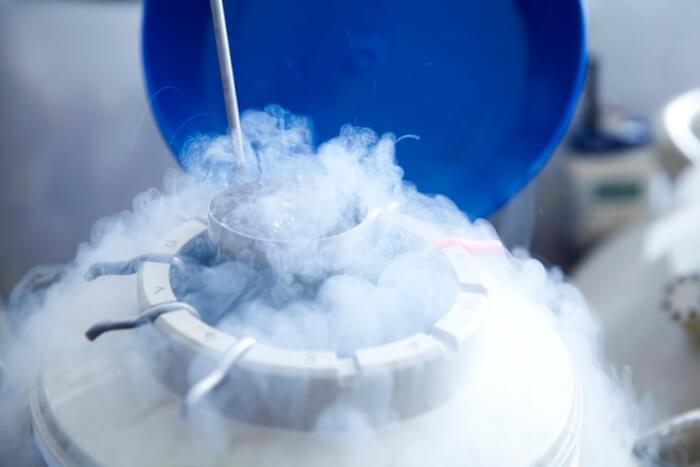Mysterious Animal Wakes Up After 24,000 Years In Permafrost
Bdelloid rotifer, a microscopic, multicellular creature, has been discovered frozen in Siberia for more than 240 centuries. The worm-like animal were able to reproduce even after spending 24 millennia in a deep freeze of 14 degrees Fahrenheit.
The animals were discovered 11.5 ft. deep in permafrost near the Alazeya River in Siberia, confirmed to be 24,000 years old thanks to radiocarbon dating analysis of the surrounding soil. Stas Malavin, co-author of the study, revealed, “We revived animals that saw woolly mammoths, which is quite impressive.”
A petri dish with a suitable medium was used to “revive” the rotifers, as scientists waited for the surviving ones to recover from their dormancy and start to move and reproduce – the creatures are restricted to asexual reproduction, and there are no males.
This isn’t the first time scientists have revived creatures from ice. Previously, the team discovered 40,000-year-old roundworms in the same area.
Ancient moss, bacteria, and viruses have also shown surprising longevity on ice, prompting concern that harmful pathogens may be released as climate change causes glaciers and permafrost to melt.
Bdelloid rotifers have enough organs, similar to that of humans, including brains, guts, muscles and of course, reproductive systems, in spite of their microscopic size. “The takeaway is that a multicellular organism can be frozen and stored, as such for thousands of years and then return back to life — a dream of many fiction writers," states Malavin.
"The more complex the organism, the trickier it is to preserve it alive frozen and, for mammals, it's not currently possible," continued Malavin. "Yet, moving from a single-celled organism to an organism with a gut and brain, though microscopic, is a big step forward."
 Source: Discovery
Source: Discovery
The animals were discovered 11.5 ft. deep in permafrost near the Alazeya River in Siberia, confirmed to be 24,000 years old thanks to radiocarbon dating analysis of the surrounding soil. Stas Malavin, co-author of the study, revealed, “We revived animals that saw woolly mammoths, which is quite impressive.”
A petri dish with a suitable medium was used to “revive” the rotifers, as scientists waited for the surviving ones to recover from their dormancy and start to move and reproduce – the creatures are restricted to asexual reproduction, and there are no males.
 Source: Discovery
Source: Discovery
Time-Traveling Animals
This is the second time scientists have brought back creatures from ice, as they found a 40,000-year-old roundworms in the same location. Ancient moss, bacteria and viruses has proved remarkable longevity within ice, sparkling concern related to how toxic pathogens can escape as glaciers and permafrost are melted due to climate change. Source: Discovery
Source: Discovery
This isn’t the first time scientists have revived creatures from ice. Previously, the team discovered 40,000-year-old roundworms in the same area.
Ancient moss, bacteria, and viruses have also shown surprising longevity on ice, prompting concern that harmful pathogens may be released as climate change causes glaciers and permafrost to melt.
 Source: Discovery
Source: Discovery
Fact or Science Fiction?
Despite their microscopic size, bdelloid rotifers have brains, guts, muscles, and reproductive systems just like us.Bdelloid rotifers have enough organs, similar to that of humans, including brains, guts, muscles and of course, reproductive systems, in spite of their microscopic size. “The takeaway is that a multicellular organism can be frozen and stored, as such for thousands of years and then return back to life — a dream of many fiction writers," states Malavin.
 Source: Discovery
Source: Discovery
"The more complex the organism, the trickier it is to preserve it alive frozen and, for mammals, it's not currently possible," continued Malavin. "Yet, moving from a single-celled organism to an organism with a gut and brain, though microscopic, is a big step forward."
Share this article
Advertisement